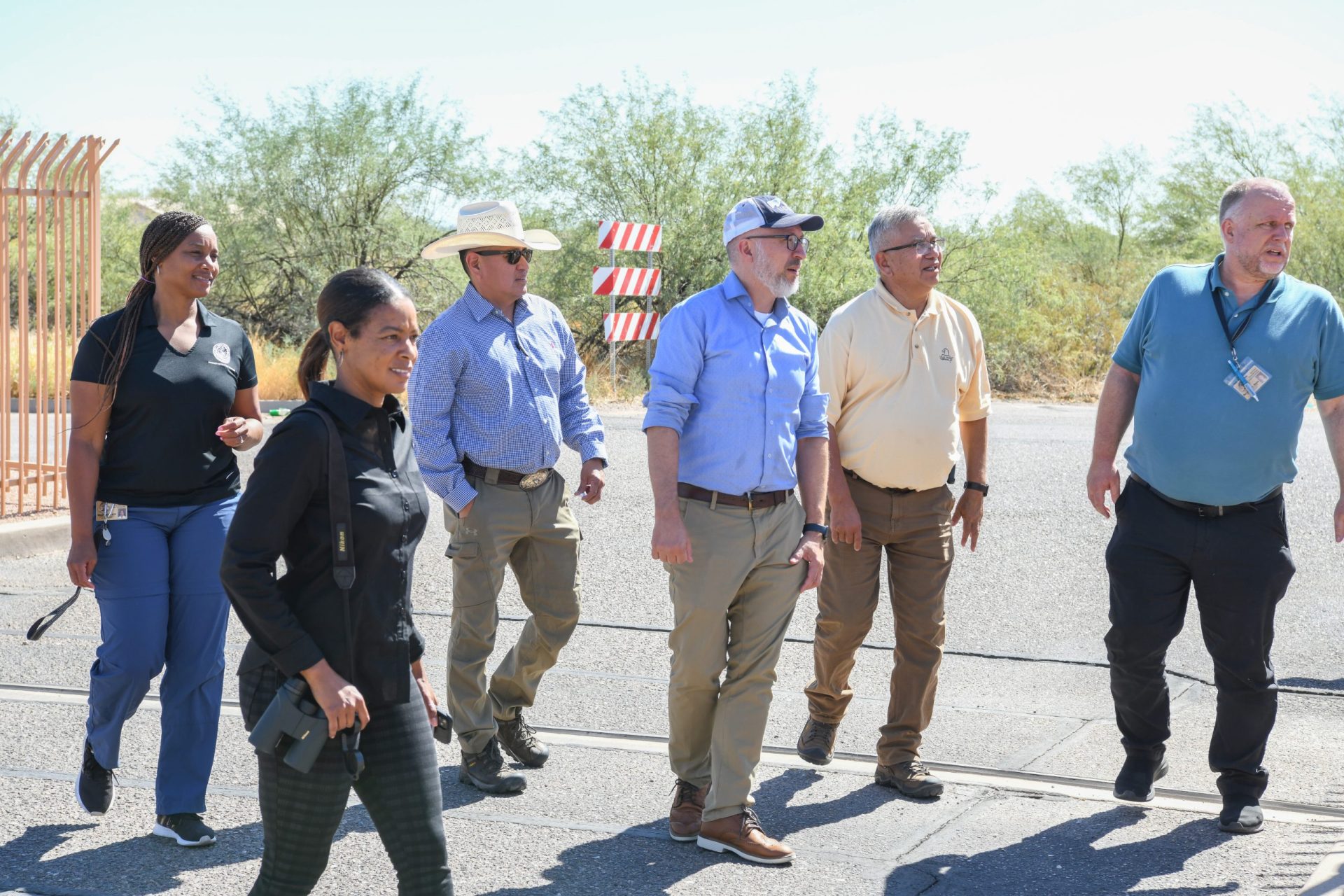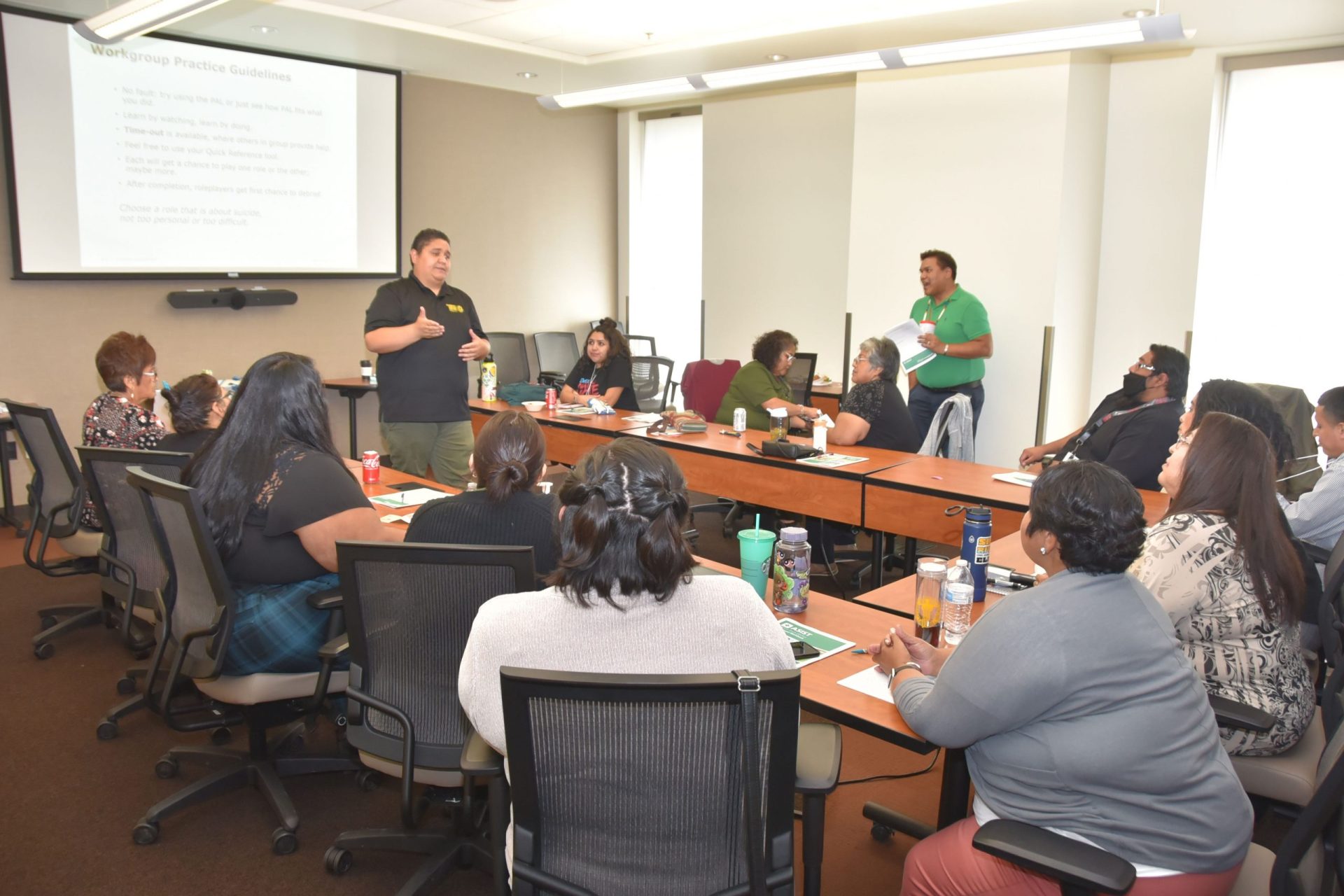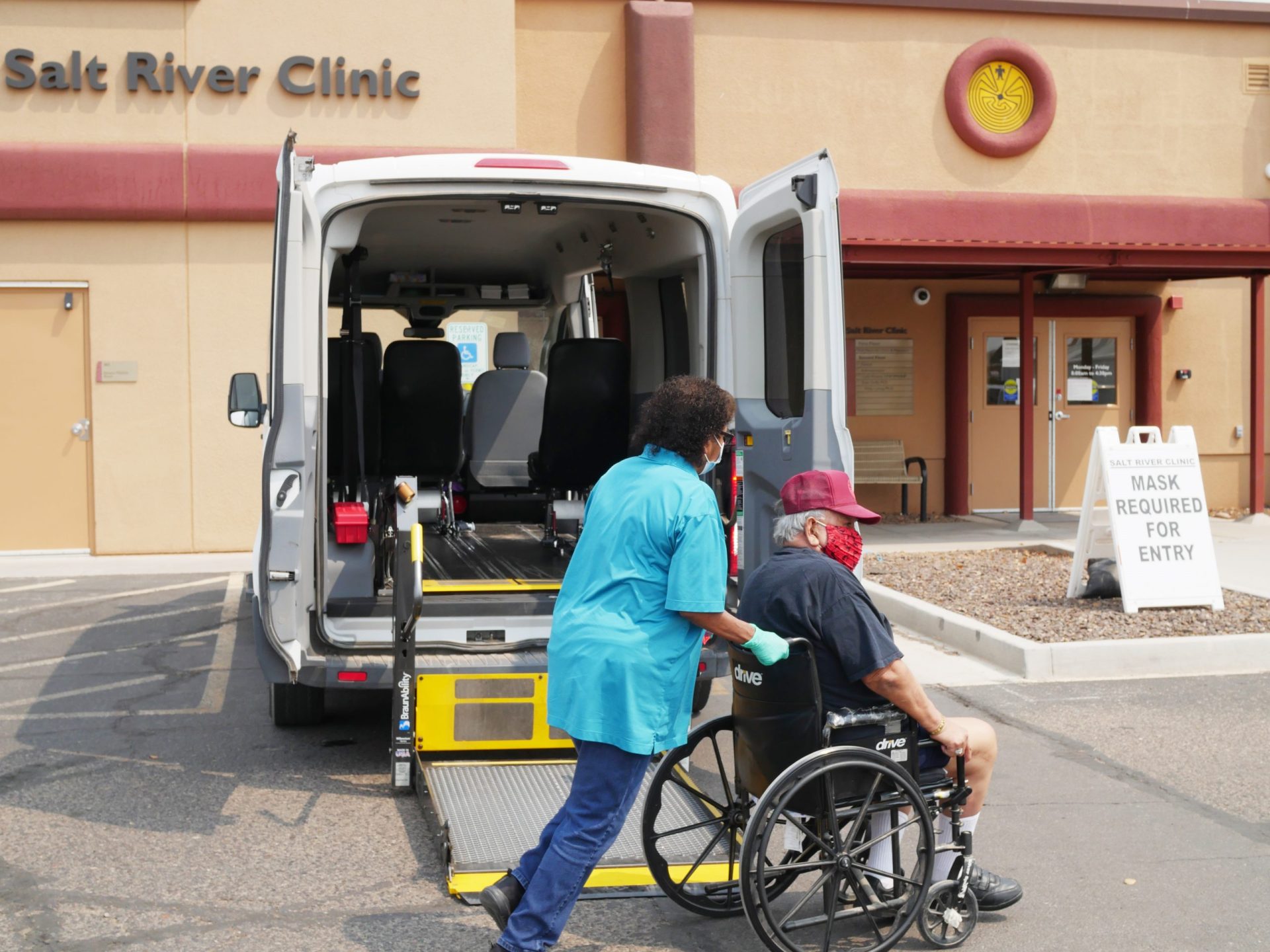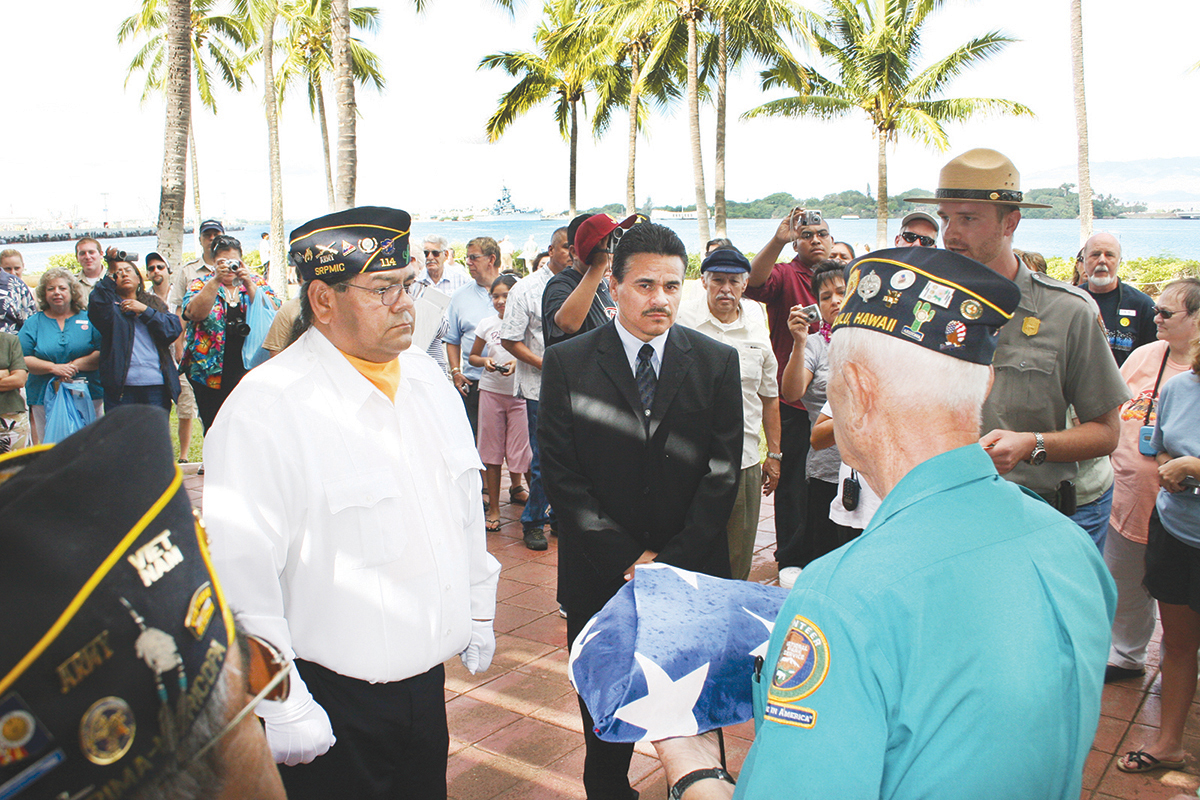VIEWS: 1730
November 13, 2023SRPMIC Air Quality Program Receives High Praise from EPA Director
On October 11, 2023 Matthew Lakin, deputy director of the Air and Radiation Division at the U.S. Environmental Protection Agency (EPA), Region 9, met with staff members of the Salt River Pima-Maricopa Indian Community’s Air Quality Program. Region 9 of the EPA has its headquarters in San Francisco, California.
“I wanted to prioritize visiting here because you have a ‘shining star’ program, and I also wanted to learn more about the Community,” said Lakin during the meeting’s introduction and welcome. Lakin went on to say that, in his time working for the EPA, the Community’s Air Quality Program remains at the top of the class. “It has been impressive for two decades; it really has been amazing,” said Lakin.
Lakin met with Environmental Engineer Stan Belone of the Environmental Protection and Natural Resources (EPNR) Air Quality Program in the Community Development Department (CDD), along with Environmental Engineer Ben Davis, Senior Environmental Specialist Mangas Slinkey, Environmental Specialist Stephanie Lane, Senior Environmental Engineer Regina Leverette-Mason, Assistant Community Development Director Christopher Horan, and Assistant Community Manager Doran Dalton.
Using SRPMIC’s interactive map, Lakin was given a firsthand look into the day-to-day operations of how the AQP operates. In the meeting, they discussed the four air quality stations located around the Community and took a tour of each of them. Air quality monitoring stations have been established at the SRPMIC Senior Center, at the SRPMIC High/Middle School, off of the Beeline Hwy near the Salt River Landfill, and in Lehi.
Lakin was amazed to hear that the AQP covers the entire Community with such a small staff. “There are only four tribal agencies in our region out of the 148 tribes that conduct regulatory [air quality] monitoring, and one of them is Salt River,” said Lakin. He then added, “It is a model program. For us [at EPA], that is the highest bar. It’s not easy to do, especially for a small agency.”
During the meeting, Lakin was also impressed to hear how the flag program is an integral part of the AQP to alert Community members about outdoor air quality. Flags are stationed at the Senior Center, the Two Waters Complex, SRPMIC High/Middle School, the Salt River Community Center and the Lehi Community Center.
The flag program utilizes colors to inform the Community regarding the air quality each day: green, yellow, orange and red. A green flag denotes good air quality with no risk; a yellow flag represents acceptable air quality that may be of concern for unusually sensitive populations; an orange flag symbolizes unhealthy air quality for sensitive groups; and a red flag signifies unhealthy air quality for everyone. As the air quality changes, the flags are updated frequently.
“In some cases, we will call the school and say it’s an orange flag day today, and we suggest keeping the students inside,” said Slinkey.
The meeting continued with a guided tour of the air quality monitoring stations in the Community. While at the SRPMIC Senior Center, Lakin and Belone talked at length regarding the upkeep of the monitoring equipment, the program’s budget goals, and how the AQP will continue to maintain a high standard for monitoring the Community’s air quality.
“I’m very happy to hear what you all have been doing,” said Lakin.







